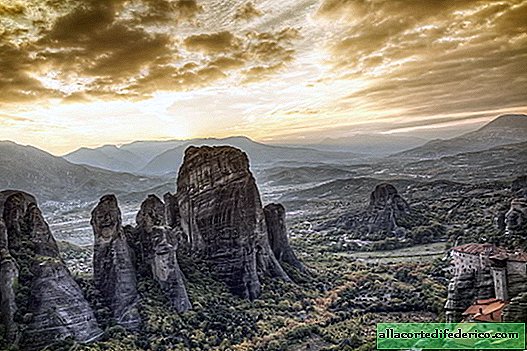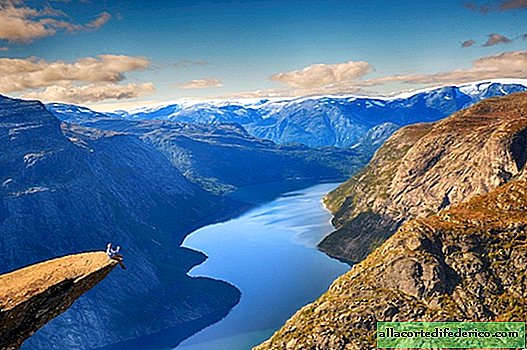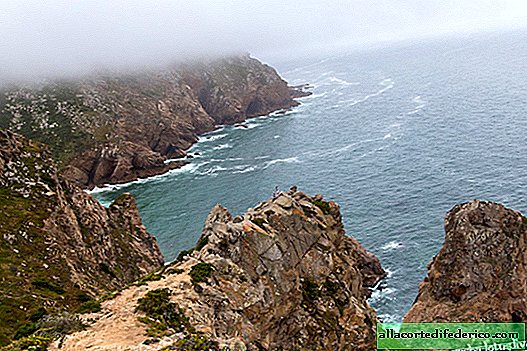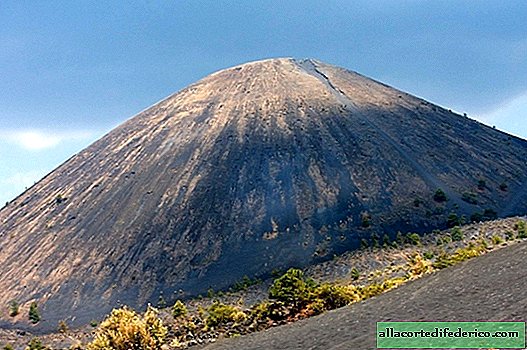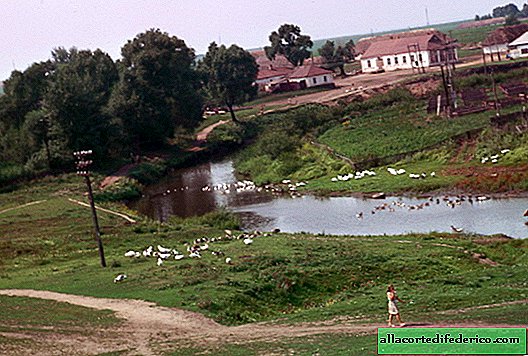Rare giants: what the 10 largest butterflies in the world look like
Butterflies are rightfully considered one of the most beautiful inhabitants of our planet. But the fluttering beauties of our country can not be compared with the giant butterflies that live in the southern countries. We offer to see how the largest representatives of the order Lepidoptera look and where they live.
Tizania agrippins
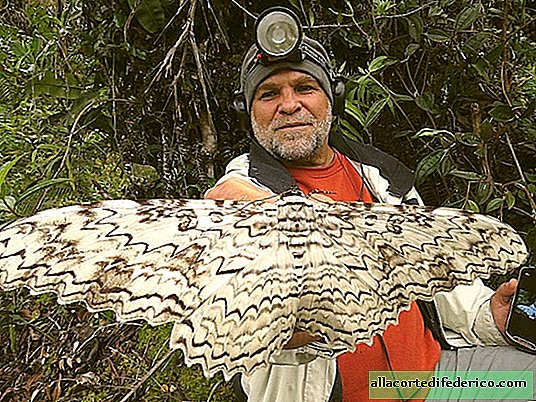 Tizania agrippins
Tizania agrippinsThis nocturnal butterfly called titania agrippina (lat. Thysania agrippina), or the scoop of agrippina, lives in the tropical rainforests of South and Central America. The largest representative of this species known to science was caught in Brazil, and its wingspan reached 29.8 centimeters.
 Tizania agrippins
Tizania agrippinsQueen Alexandra's Birdwing
 Queen Alexandra's Birdwing, male
Queen Alexandra's Birdwing, maleA butterfly called Queen Alexandra’s bird wing, or Queen Alexandra’s ornithopter (lat. Ornithoptera alexandrae), is the largest butterfly in the world. These butterflies live only on the island of New Guinea and, unfortunately, are so rare that they are even listed in the International Red Book as an endangered species. The wingspan of this butterfly reaches 27 centimeters, while males and females differ significantly in the color and shape of the wings.
 Queen Alexandra's bird wing: male above, female below
Queen Alexandra's bird wing: male above, female belowPeacock-eyed hercules
 Peacock-eye Hercules, male
Peacock-eye Hercules, malePeacock-eye Hercules, or Koscinocera Hercules (lat. Coscinocera hercules), is also a nocturnal butterfly and lives in Australia and Papua New Guinea. The wingspan of this beauty reaches 26-27 centimeters, and the caterpillars grow up to 10 centimeters in length. In this species, females and males also have different colors and wing shapes.
Peacock-eye atlas
 Peacock-eye atlas
Peacock-eye atlasAnother giant butterfly from the peacock-eye family is the peacock-eye atlas (lat.Attacus atlas). They live in the tropical and subtropical forests of Southeast Asia, and their wingspan reaches 24 centimeters. It is noteworthy that adult butterflies do not feed and live off the nutrients accumulated by the caterpillar. Females and males are somewhat different from each other in the color and shape of the wings.
Sailboat Antimach
 Sailboat Antimach
Sailboat AntimachThis bright leopard-colored butterfly lives in the equatorial and tropical regions of Africa and is the largest butterfly of the continent. Sailboat antimach (lat. Papilio antimachus) has a wingspan of up to 23-25 centimeters and is active in the daytime.
Ornithopter Goliath
 Ornithopter goliath: male above, female below
Ornithopter goliath: male above, female belowOrnithopter goliath, or bird goliath (Lat. Ornithoptera goliath), has dimensions up to 20-22 centimeters and lives on the islands of Southeast Asia. Due to the island distribution, several subspecies are distinguished among them, which differ in nuances of color.
Troyes Hippolyte
 Troyes Hippolyte: male above, female below
Troyes Hippolyte: male above, female belowFemales of the trojes species, hippolyte (lat. Troides hypolitus) are larger than males, and their wingspan reaches 20 centimeters. These butterflies inhabit the forests of the island of Sulawesi and the Maluku Islands.
Trogonopter trojan
 Trogonopter trojan, male
Trogonopter trojan, maleAnother beauty, occupying the 8th place in our list of giants, is the trogonopter trojan (lat. Trogonoptera trojana). A very rare butterfly that lives only on the island of Palawan (Philippines). The wingspan of this species reaches 17-19 centimeters. Males are smaller, but their color is brighter.
Ornithopter Croesus
 Ornithopter Croesus, male
Ornithopter Croesus, maleA very bright day butterfly with a contrasting orange-black color lives on the territory of Indonesia and the islands of the Moluccan archipelago. Ornithoptera Croesus (lat. Ornithoptera croesus) has a wingspan of 16-19 centimeters, while females are larger than males.
Madagascar comet
 Madagascar comet
Madagascar cometVery original night butterfly of bright colors, living exclusively in the rainforests of Madagascar. Madagascar comet (lat. Argema mittrei) is so named for the unusual shape of the lower wings. The wingspan of this beauty, whose image is present on a Madagascar banknote of 5,000 Malagasy francs, reaches 14-18 centimeters.


